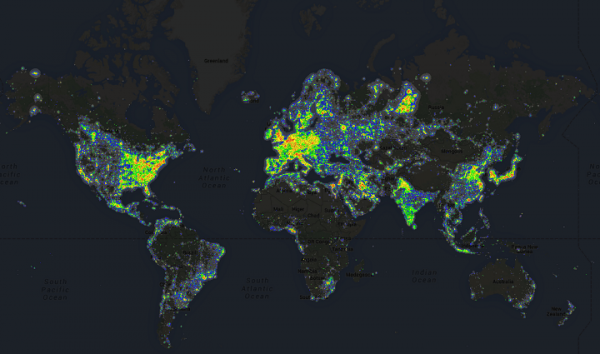Lights Out!
The 70-plus miles of the Seashore are a natural wonder, and its eights villages – Waves, Rodanthe, Salvo, Avon, Buxton, Frisco, Hatteras, and Ocracoke – have managed to keep their lights down or off at night. Now, the National Park Service is hoping to have Cape Hatteras National Seashore listed as a Designated Dark Sky Location, making it the first coastal area in the world to earn the distinction.
There aren’t many places in the country where you can enjoy a truly dark night sky. In 2001, the International Dark-Sky Association began protecting areas around the world as dark sky locations. Through education and outreach programs, communities, parks, and sanctuaries around the world have been designated as International Dark Sky Places. Between the United States, Europe, and southwest Africa, 36 locations are listed as Dark Sky Places; of those, 20 are parks.
Organizations and communities actively work together to keep artificial lights down at night. Street and building lights are either not used or kept to a minimum, often times being directed and placed low to the ground to avoid the beam from fanning out. A dark sky can do more than fill an observer with wonder; it helps humans and wildlife alike!
Here along Cape Hatteras National Seashore, sea turtle hatchlings rely on the light of the moon to make it safely to the ocean. Artificial lights from buildings, street lamps, and vehicles can distract hatchlings, which can cause them to crawl away from the water and into harm’s way. Overly bright night skies can negatively impact our circadian or our natural internal 24-hour – rhythm, create challenges for those studying astronomy, and can also harm ecosystems. By altering the natural light cycles with artificial light, animals are placed in increased danger. Animals and plants rely heavily on Earth’s natural light cycles each day for foraging, reproduction, protection, and rest. Studies have shown animals become disoriented and confused in areas with an abundance of light pollution, and the effects don’t stop there. The over-use of lights wastes $2.2 billion a year in energy costs in the U.S. alone, and by looking at satellite images, you can see how lit up the country is.
What would it mean if the Seashore became a Designated Dark Sky Location? In order to get the designation, the National Park Service has to go through a rigorous application process. Proving the night sky is dark seems relatively easy; just look up! But there’s more to it. Community support for the initiative must be well documented, and specific sites the applicant or organization believes meet the requirements have to be visited by night sky experts. Upon completion of the application process, the area listed as a Dark Sky Place must foster education through community outreach, media relations, and social media. The International Dark-Sky Association works with communities, parks, and sanctuaries to “…enhance the visibility of designated locations and foster increased tourism and local economic activity.” Some of the regulations currently in place along the Seashore are related to protecting the night sky. Nighttime beach driving has been limited to certain hours in an effort to reduce light pollution along the Seashore, and to keep nesting sea turtles and emerging hatchlings from becoming disoriented.
As Cape Hatteras National Seashore goes through the application process, it must assess and make any changes to lighting used at Park facilities. A lightscape management plan was developed by the Seashore and a five-year time-table for 90% compliance is mandatory in order to receive a Dark Sky Places certification. Preserving the night sky and providing educational programs is a major priority for the Seashore. A few years ago, the National Park Service teamed up with Midgett Realty to encourage residents and visitors to turn off outdoor lights during turtle nesting season, or to use lighting that only illuminates a specific area, preventing the light from spreading.
The Park also hosts weekly night sky walks, where visitors are treated to a spectacular all-natural light show. Rangers teach attendees how to identify constellations, as well as pass along valuable information about the importance of maintaining dark night skies. Full moon lighthouse climbs are also offered throughout the season allowing visitors and residents the opportunity to climb the Bodie Island and Cape Hatteras lighthouses and have a one-of-a-kind star gazing experience.
Earning the Dark Sky Places designation would not only help the efforts to protect sea turtles and maintain healthy ecosystems, it would also partner well with the Park’s Go Green project. The Seashore began the Go Green initiative to reduce and prevent its carbon footprint in an effort to benefit the local economy and environment. Observing a dark night sky is a rarity for many people. As a result, one of Cape Hatteras National Seashore’s goals is to bring its visitors and residents a unique and wonderful night sky experience.
For more about the International Dark-Sky Association, visit their website at darksky.org.
For night sky and other events along Cape Hatteras National Seashore, click here.




